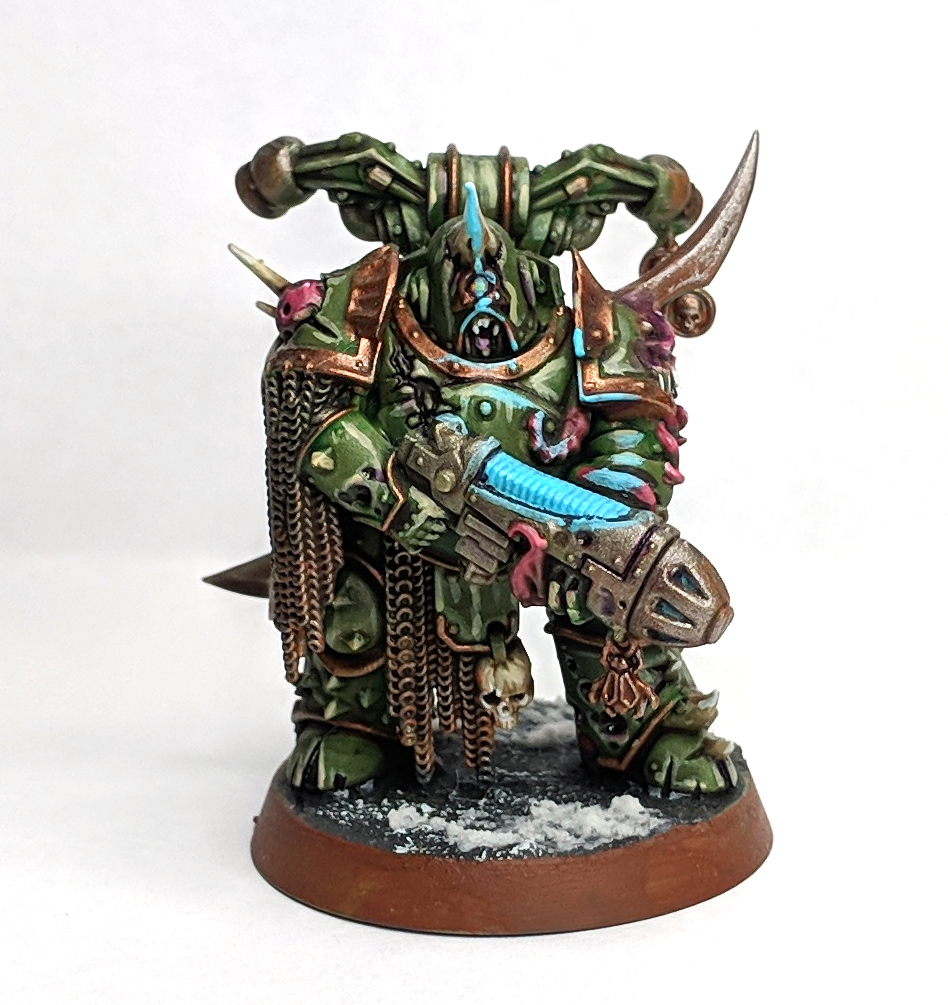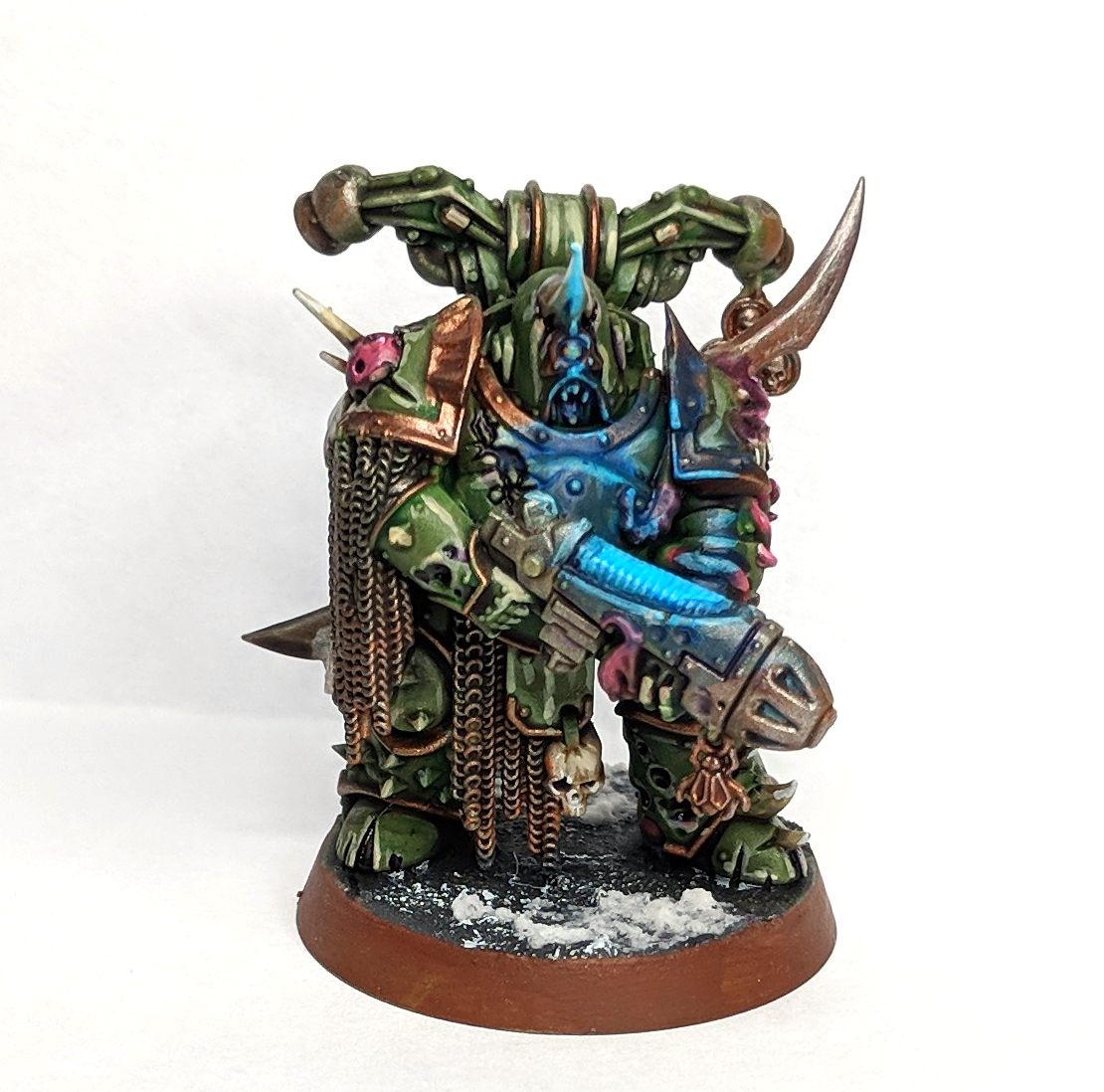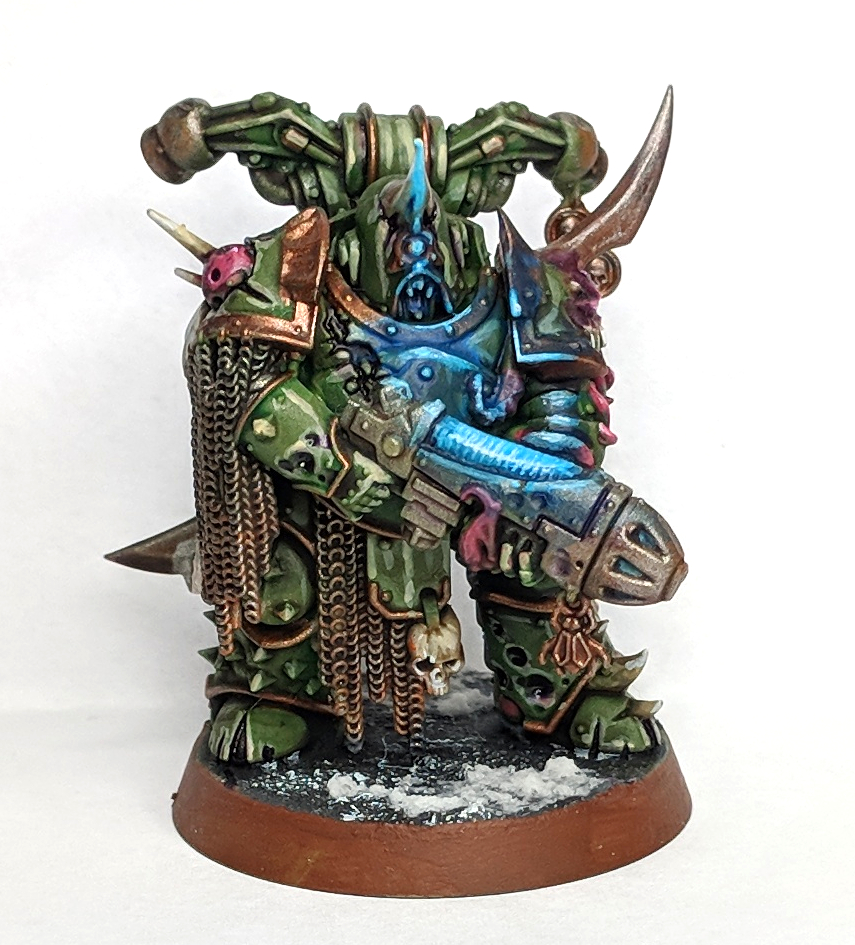OSL can be scary, you have a lovely painted model and you’re frightened of ruining it right? Well there’s definitely a risk in that but live dangerously and go for it, it’s actually no harder than applying a wash, a pseudo-glaze and a few highlights. And the best bit, with a hairdryer at least, it can take no more than 20 mins, if you’re carefree.
In the example below I used blue because that’s my gimmick, but this approach will work with any colours. You’ll need a super bright shade (in my case Baharroth Blue), a mid tone (VMC Medium Blue) and a dark wash of that tone (or a dark paint, lots of water and nerves of steel) (not really) and Ulthuan Grey (or a really light grey/white color).
For other colours I’d probably try the following combo’s:
Green you could use Moot Green + Yellow, Biel Tan Wash, Warboss Green glaze, and Ulthuan
Red: Troll Slayer Orange, Caroberg Crimson, Mephiston Red glaze, and Ulthuan.
Purpe: Fulgrim Pink, Druchii Violet, Xereus Purple, and Ulthuan
You get the idea.
Items required

Innes and Gunn’s Rum casked beer because it has a bit of heat so great for some glowing effects.

Bright Tone (Baharroth etc..)

Wash (Drakenhoff etc..)

Medium Tone (VMC Intermediate Blue)

Bright, near white colour (Ulthuan is perfect for this)
The Process
Stage 1 – Minute 0
First things first, drink the beer to get over the fear that it’ll fail, or if does that you’ll care slightly less. Then go and find a suitable candidate, or paint one and come back here to stage 1. I chose an Plague Marine I painted a while ago, because he has a Plasma Gun, and was the nearest model to the front of the box I was looking at once I drank the beer.

Here he is, all lacking in glow and wonder. Lets fix that…
Stage 2 – Minute 0 – 3ish
Ok, the first two stages will cause panic as they don’t look good at all and you’ll regret starting on the path to en-“lighten”-ment (hurr). Take your bright tone, in my case that was the Baharroth Blue and thin it as normal. Now apply it over the light source (the plasma coil), on the edges of any raised plates, armour, spikes, rims etc… that would face the light source, not too much but enough that it looks something like this:

(I told you it would look bad at this point, even on stage 2 it’ll look worryingly like a bad idea).
Stage 2 – Minute 3-5ish
Apply your wash over the areas where the light would hit the model, and especially in the recesses in those places (even though technically it wouldn’t hit there). Also apply it over the edges of the light source.

Notice the shade over the chest area, around the plasma and over the metals on the gun and shoulder pad/neck/face etc.. It still looks sketchy I know, but trust me the next step is the best bit. Use a hairdryer now to save time.
Stage 3 – Minute 5-10ish
Make sure stage 1 is dry before doing this bit (hairdryer is legit a pro-hobby purchase). This is the trickiest bit now as you run the risk of flooding the model. Make a super thin mixture of water and your intermediate shade (VMC Intermediate blue in my case) eyeballing it i’d say about 5:1/6:1 water to paint. Now get some on your brush, but wipe off excess so it doesn’t run and apply it all over the areas where the light hits, including over the previous colour.

Holy cow, magic right? The intermediate glaze will tint the areas where the colour hits but keeps some of the original colours showing through, it’s why we started with the lightest colour and worked backwards, it also makes it look nice and fuzzy just like a glow.
You can see the glaze best on the chest, face and on the metal parts of the gun nearest the light source.
Stage 4 – Minute 10-15
Now go back to your original colour/bright tone (Baharroth blue for me, always) and do a few highlights in the centre of your original ones for instant stage 2 highlights. Only do this on the bits that would reflect the best, (metals and hard edges such as shoulder pad trims). Also do it on the edges and the inner ridges of the plasma coil or whatever light source you’re using.

Notice the brighter bits have a slightly lighter tint now (most clear on the arm and edge of plasma coil in this picture)
Stage 5 / Final Stage – Minute 15-20
The only colour we haven’t used yet is Ulthuan Grey, let’s rectify that. Repeat the last step but ONLY apply it to the light source and maybe on the tiniest part of the shiniest surfaces (shoulder pad and the very centre of the edges of the gun metal bits). Don’t over do this bit, the more you use, the LESS light the glow will look.

Here Ulthuan Grey was only used on the plasma coil rim, and the lower corner of the shoulder pad closest to the light source (also a single dot on tentacle as it’s almost touching the gun, and in the centre of each of the 3 ridges of the arm.
Complete
That was easy right? painting in reverse order can be fun. Celebrate with a different beer, my victory drink was Brewdog’s Cybernaut not as warming as the Innes & Gunn, but a good victory celebration, and the can is teal which is almost Baharroth Blue.

Image (c) Brewdog.
The OSL effect isn’t amazing in this case but its visually striking and for 20 minutes effort it looks good, especially from table top distance. Here’s some other ones I’ve done in exactly the same way:
The green’s where Flash Gitz Yellow, Biel Tan Green shade, and VMC Intermediate Green for the glaze.
OSL effect for the effort: 9/10
Innes & Gunn Blood Red Sky (Rum Barrel): 8/10
Brewdog Cybernaut Session IPA: 6/10 (I’m not a fan of Session beer it turns out)



